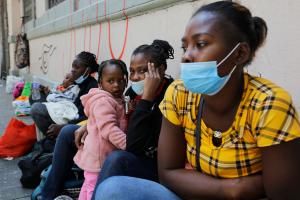Pulse: Industry
Separate And Unequal (Part 2): Overcoming Healthcare’s Profound Facilities Maldistribution
In Part 1 of “Separate and Unequal,” I took the Biden Administration to task for its proposed 2022 regulatory initiatives to advance health equity and improve maternal-health outcomes. These initiatives include five new reporting measures for hospitals and a new “birthing-friendly hospital” designation. My complaint is that they add to hospitals’ regulatory burden without improving health access and service provision for people living in low-income communities.
That Giant Sucking Sound: Lost Patient Volume
As health systems report their earnings for the first quarter of 2022, the red ink is flowing in torrents. This is mostly due to financial losses on investment portfolios. More concerning, however, are hospitals’ substantial operating losses.
During a Fitch Ratings webinar on the mounting pressures confronting not-for-profit providers, Senior Director Kevin Halloran described health systems’ current financial performance as follows,
No matter how you look at it, the first quarter of 2022 will be one of the worst on record for most providers.
Overcoming Medical Orthodoxy (Part 3): Forces Disrupting “Old Medicine”
This is the third article in a four-part series on reimagining American medical education and ongoing clinician training.
Separate And Unequal (Part 1): Healthcare’s Profound Maldistribution of Facilities
As part of its announcement of payment guidelines for FY 2023, the Centers for Medicare and Medicaid Services (CMS) launched six initiatives to advance health equity and improve maternal health outcomes within hospitals. These initiatives are central to the Biden Administration’s commitment to “improving care for people and communities who are disadvantaged and/or underserved by the healthcare system.”
The Caribbean in the Crossfire: Between Covid-19, Narcotics, China, and Russia’s Invasion of Ukraine
My newest work on how the combination of Covid-19, Russia's invasion of the Ukraine, PRC engagement in the Caribbean, and transnational organized crime dynamics, are gravely stressing and transforming the Caribbean.
Parallel Universes: EconVue Spotlight April 2022 - Has the 4th Estate Eaten Up the Other Three?
Most Russian experts and military strategists I follow doubted Putin would invade Ukraine. I agreed with their rational arguments, but here we are. I’m reminded of the Haruki Murakami novel 1Q84. The heroine alights from her taxi and gradually discovers that she is living in a world where everything is almost the same, except there are two moons. Since Covid began, I doubt I’m alone in feeling that I have somehow gotten off at the wrong stop, and am living in a hellishly perverse alternative universe.
Cracks in the Foundation, Part 3: Overcoming Healthcare’s Services-Need Mismatch
This piece is the third in a series of six columns in which David Johnson addresses five structural defects undermining nonprofit healthcare. He outlined all five defects in the first column of the series. Part two is here.
A Case Study of the Costs of Rate Reregulation: America’s Freight Railroads versus Shipper Industries
The railroad industry can give us some singular insights into the conditions, costs and benefits of economic regulation, and today’s essay is for those interested in those insights.
Overcoming Medical Orthodoxy (Part 2): Reinventing Medical Education
This is the second article in a two-part series on reimagining American medical education and ongoing physician training.
Overcoming Medical Orthodoxy (Part 1): The Origins of Dysfunction
This is the first article in a two-part series on reimagining American medical education. This article details the limitations of the current models in training doctors to combat chronic disease and practice value-based care. Part 2 illustrates innovative approaches to training medical professionals through the lens of four new medical schools. These schools have developed innovative approaches for training medical professionals to manage the health of distinct populations holistically and cohesively.


 by
by 



 by
by 
 by
by 

 by
by 

